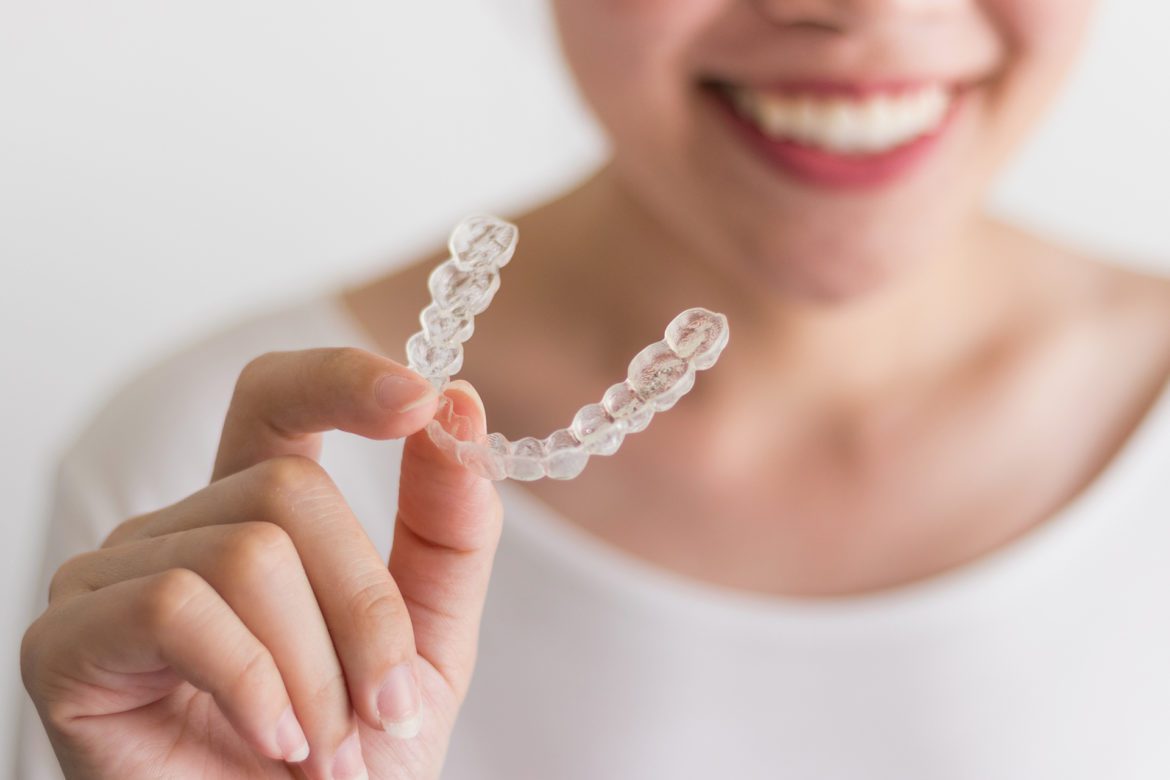Orthodontic treatment is often necessary to help improve the bite, jaw position and tooth alignment. In the past, braces with noticeable wires and brackets were the only option, but nowadays there are alternatives.
Invisalign offers undetectable orthodontia that can be just as effective as conventional braces. Take a closer look at our guide to learn more about Invisalign, how much it costs and if it’s worth the price tag.
Table Of Contents
- What Is Invisalign?
- How Does Invisalign Work?
- How Much Does Invisalign Cost?Invisalign aligners are custom made for each patient out of FDA-approved, medical-grade plastic. In many cases, the treatment is considered just as effective as traditional braces, and more convenient. The plastic trays are easier to clean and users can remove them to eat, drink and floss more comfortably.
How Does Invisalign Work?
Invisalign works by applying pressure and force, gradually shifting your teeth into the correct alignment and position. Certain patients may also need bone-colored attachments that bond to the teeth, to help the aligner trays work more effectively.
To start treatment, request an evaluation with an Invisalign provider. During the initial consultation, the dentist will take x-rays to evaluate your oral health and determine your eligibility.
After evaluation and approval, your doctor will work out a treatment plan, take an impression of your bite and order a custom set of aligners. Aligners are upgraded progressively at your doctor’s discretion. Treatment time takes 12 to 18 months on average and patients must wear the aligner at least 22 hours a day for the best results.
Eager to reveal their best smile, it is common for patients to request teeth whitening during their Invisalign treatment. The doctor may offer a low-intensity whitening gel to apply inside the aligners at night, but patients can also purchase effective, over-the-counter products from various teeth whitening companies.
Invisalign pros and cons
Pros
- FDA approved
- Removable
- Easy to clean
- Discreet, invisible braces
- No broken wires or brackets
- Low level of discomfort
Cons
- Complex cases may not be eligible
- Invisalign may not work on patients with bridgework
- Aligners must be removed to eat or drink to prevent buildup and cavities
- Must be worn at least 22 hours a day
- Aligners may get lost or misplaced
- Younger patients may require more parental oversight to ensure proper use
Invisalign vs other clear aligners
Invisalign is the most popular clear aligner company, but it is not the only one. Its direct competitor, ClearCorrect, makes plastic aligners out of a thinner material. ClearCorrect is made out of polyurethane resin while Invisalign is composed of patented thermoplastic material. Both constructions are FDA-approved, BPA and phthalates-free.
ClearCorrect and Invisalign are exclusively administered by dentists or orthodontists. Other companies, like SmileDirectClub, offer affordable, direct-to-consumer aligners without requiring in-person oversight. Unsupervised orthodontic treatment risks permanent damage, which is why these direct-to-consumer companies are not recommended by dental professionals.

